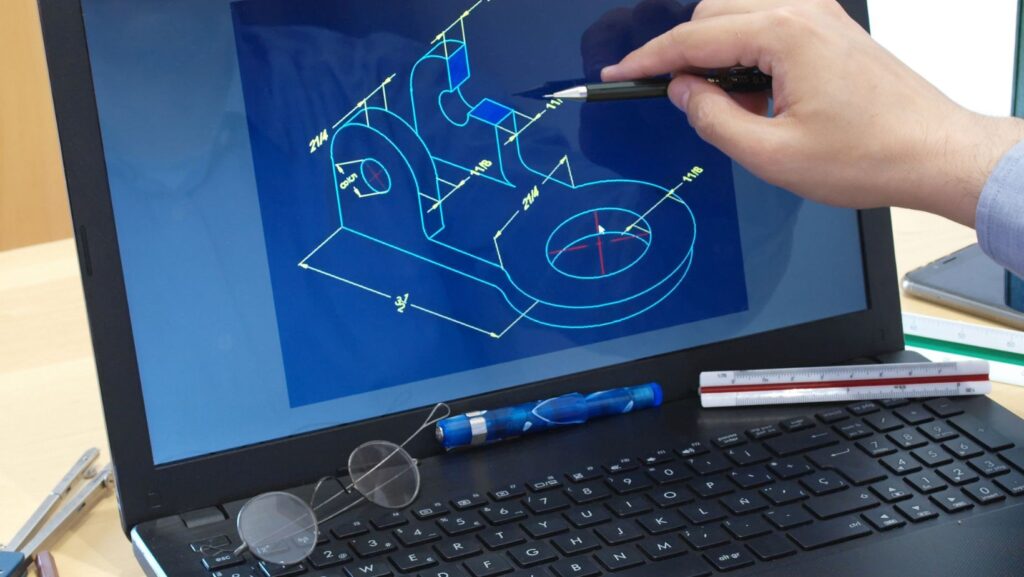Choosing the best laptop for CAD tasks is crucial for professionals and students alike. CAD software demands high-performance hardware that can handle complex designs and simulations without breaking a sweat. Whether it’s for architectural designs, engineering drawings, or 3D modeling, the right laptop can significantly enhance productivity and creativity.
With the vast array of options available in the market, finding the perfect match for your CAD needs can be daunting. Factors such as processor speed, graphics capabilities, memory, and display quality play pivotal roles in the selection process. In the following sections, we’ll guide you through the top laptops that stand out for their robust performance and reliability in running CAD applications, ensuring you make an informed decision tailored to your specific requirements.
Best Laptops For CAD
Selecting the best laptops for CAD isn’t just about finding a machine that can run the software. It’s about identifying laptops that can efficiently handle, render, and process complex designs and simulations. High-performance hardware is paramount for professionals and students alike who rely on CAD applications for their daily tasks. This section dives into the essential components – CPU, GPU, and memory/storage – that define a laptop’s capability to operate CAD software effectively.
CPU Performance Needs
 For CAD work, the central processing unit (CPU) serves as the heart of the laptop. It dictates how swiftly and efficiently applications run, especially when managing complex simulations or rendering detailed 3D models. High clock speeds and multiple cores are vital. Intel’s i7 or i9 processors and AMD’s Ryzen 7 or Ryzen 9 series stand out as top choices for such tasks. These processors excel in multitasking and can significantly reduce the time it takes to complete demanding CAD operations, ensuring productivity remains high.
For CAD work, the central processing unit (CPU) serves as the heart of the laptop. It dictates how swiftly and efficiently applications run, especially when managing complex simulations or rendering detailed 3D models. High clock speeds and multiple cores are vital. Intel’s i7 or i9 processors and AMD’s Ryzen 7 or Ryzen 9 series stand out as top choices for such tasks. These processors excel in multitasking and can significantly reduce the time it takes to complete demanding CAD operations, ensuring productivity remains high.
Importance of GPU for CAD
The graphics processing unit (GPU) plays a crucial role in rendering images, translating the data from the CPU into visuals. For CAD applications, a robust GPU means smoother viewport navigation, faster rendering times, and better handling of 3D models. Dedicated GPUs, such as NVIDIA’s Quadro or GeForce RTX series, are highly recommended for their ability to manage graphically intensive tasks. These GPUs deliver the precision and power needed to run CAD software efficiently, offering professionals and enthusiasts alike the graphical fidelity required for intricate design work.
RAM and Storage Considerations
 Adequate random access memory (RAM) and sufficient storage are key for running CAD software smoothly. RAM acts as the workspace for the CPU, allowing for faster access to data and improved multitasking capabilities. For CAD tasks, 16GB of RAM is the minimum requirement, though 32GB or more is preferable for more complex projects without experiencing slowdowns.
Adequate random access memory (RAM) and sufficient storage are key for running CAD software smoothly. RAM acts as the workspace for the CPU, allowing for faster access to data and improved multitasking capabilities. For CAD tasks, 16GB of RAM is the minimum requirement, though 32GB or more is preferable for more complex projects without experiencing slowdowns.
When it comes to storage, solid-state drives (SSDs) are the preferred choice over hard disk drives (HDDs) due to their faster data access speeds. An SSD can dramatically decrease boot and load times for CAD applications and files. A minimum of 512GB SSD is recommended, but 1TB or more is ideal for accommodating large files and projects.
Top Picks for CAD Laptops in 2023
Selecting the best laptops for CAD involves a comprehensive understanding of the necessary hardware to tackle intricate designs and simulations. This section builds upon the importance of high-performance components, including CPUs, GPUs, RAM, and storage, traced in the previous segment. Focusing on these elements ensures that professionals and students alike can achieve optimal performance in CAD applications, leading to efficient and reliable design and visualization workflows. The recommendations herein underscore the top picks for CAD laptops in 2023, tailored to cater to various needs, from casual users and students to professionals demanding the utmost in power and precision.
Mid-Range Laptops for Casual Users and Students
For casual users and students, balancing performance with affordability is crucial. Laptops equipped with Intel i7 or AMD Ryzen 7 processors offer a solid foundation for running CAD software effectively. These CPUs, combined with NVIDIA GeForce GTX or RTX GPUs, provide sufficient power for moderate CAD tasks without breaking the bank. A minimum of 16GB of RAM is recommended, ensuring smooth multitasking and efficient handling of complex designs. Storage-wise, opting for an SSD of at least 512GB not only offers faster boot times and quicker file access but also ample space for numerous CAD projects.

